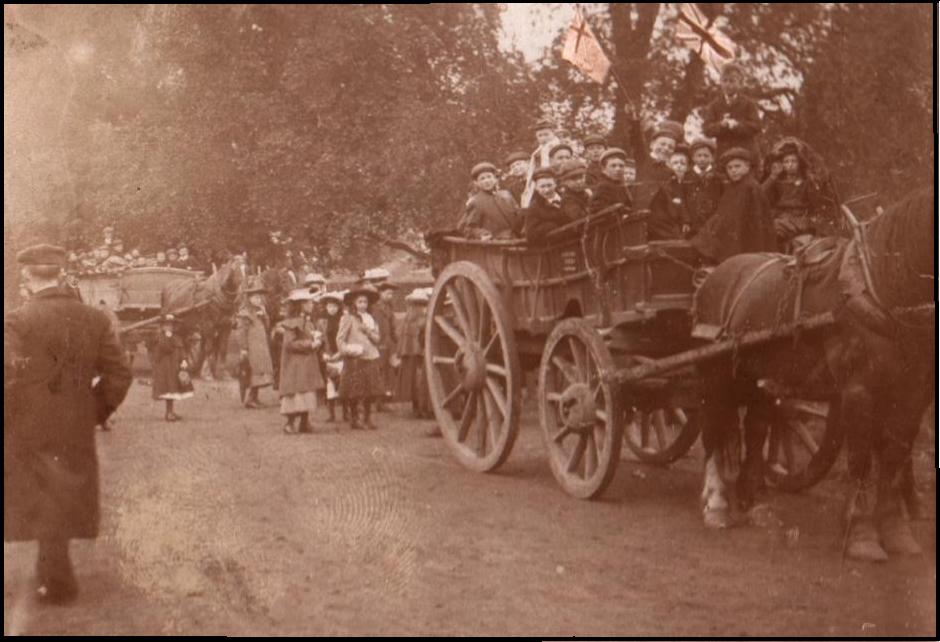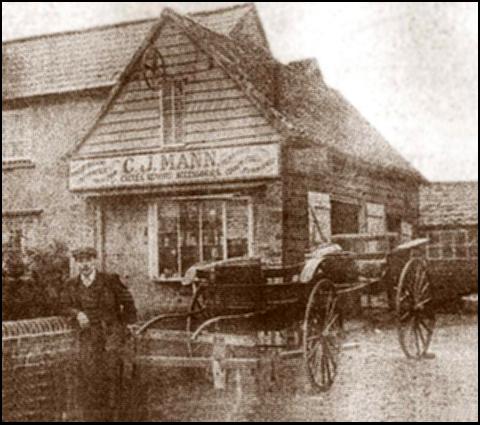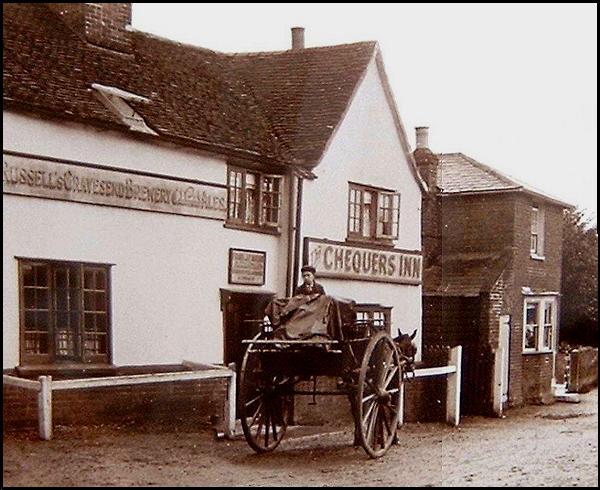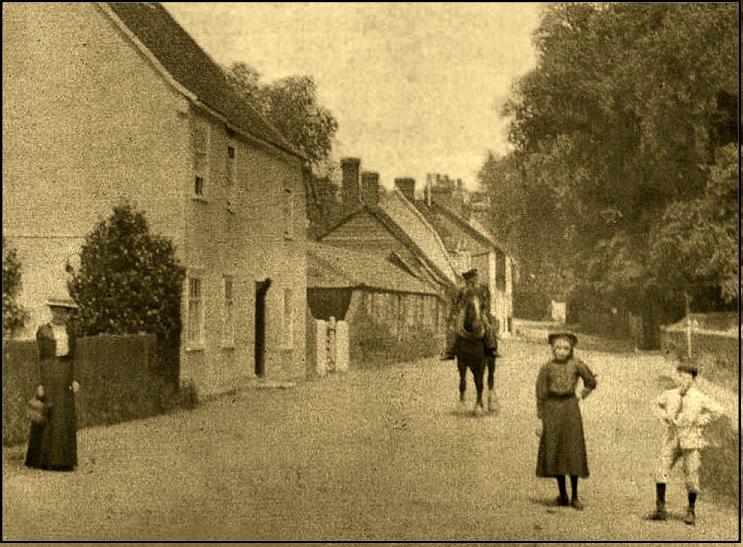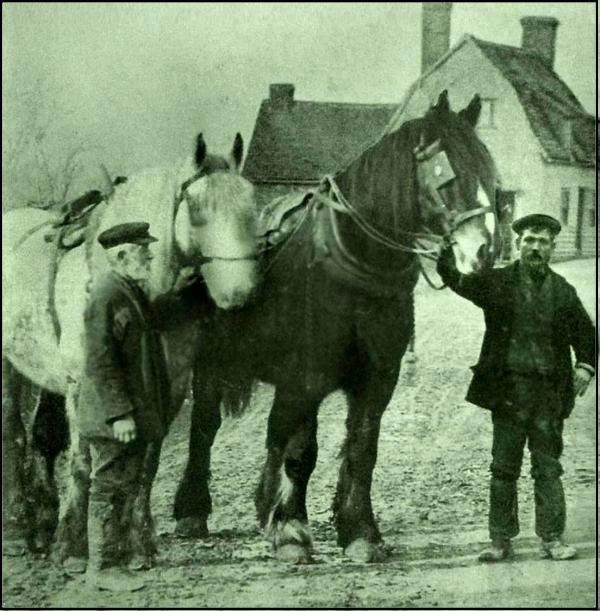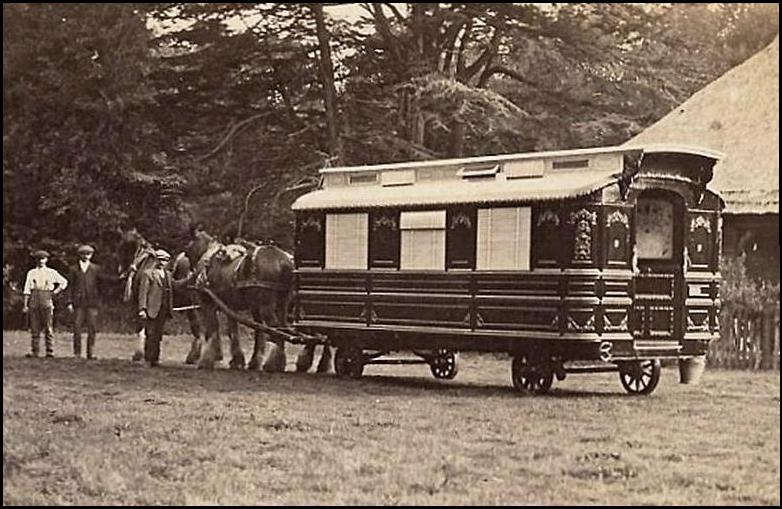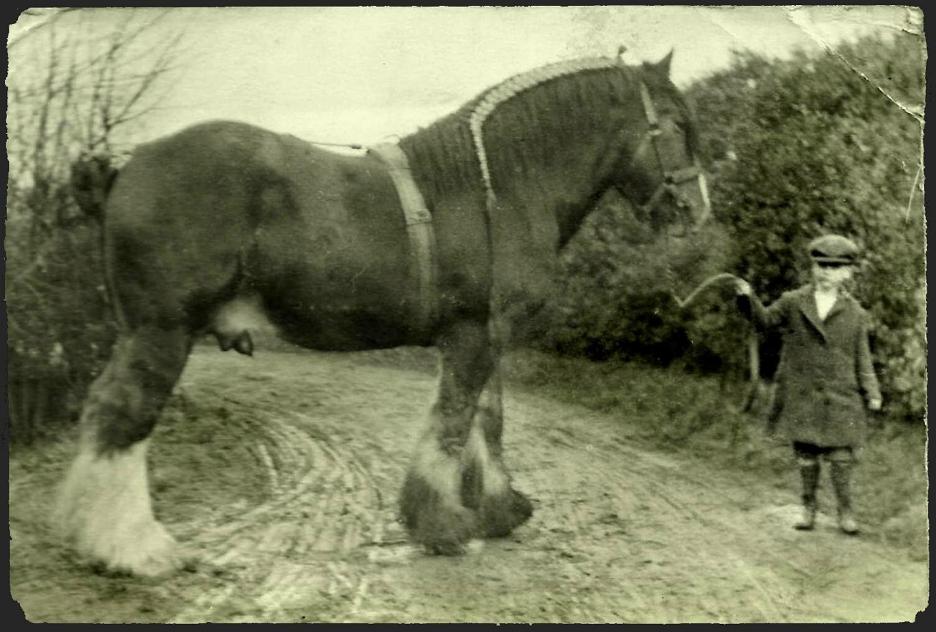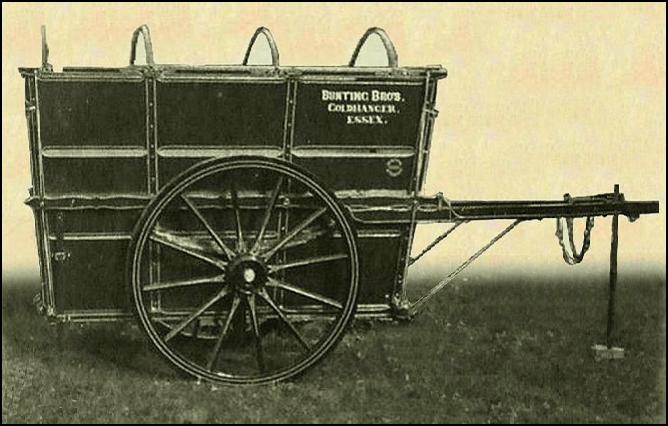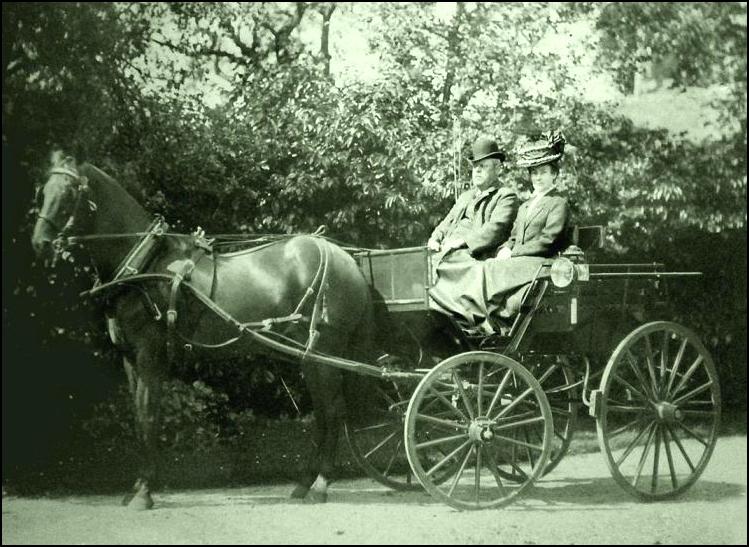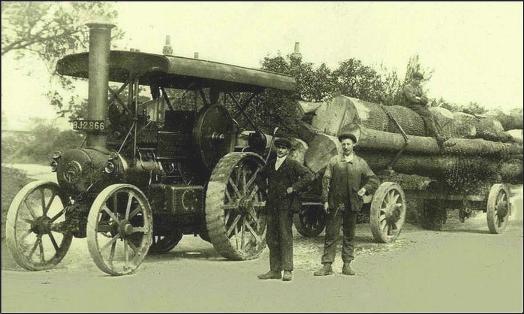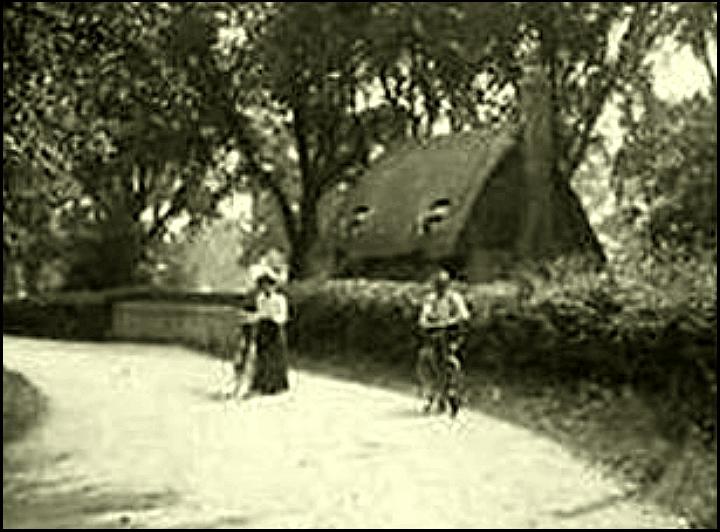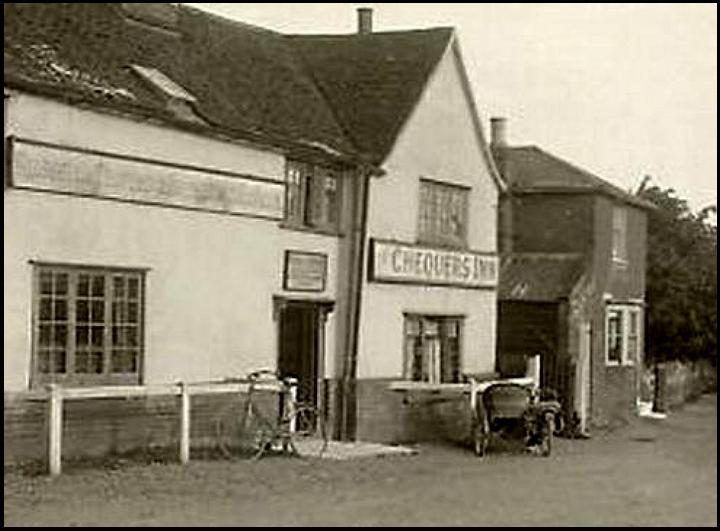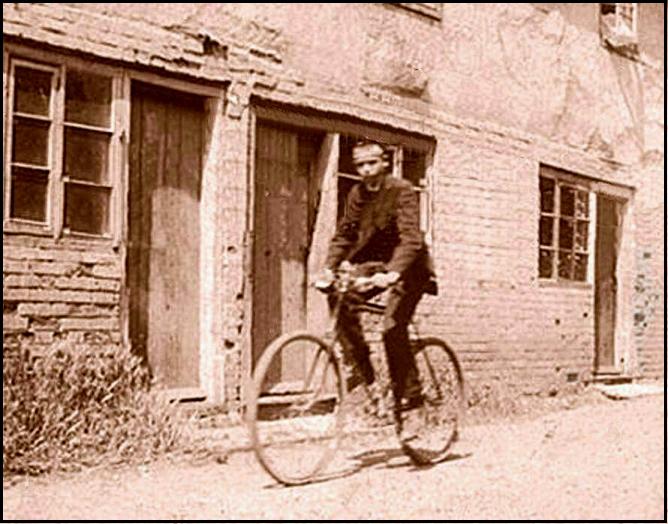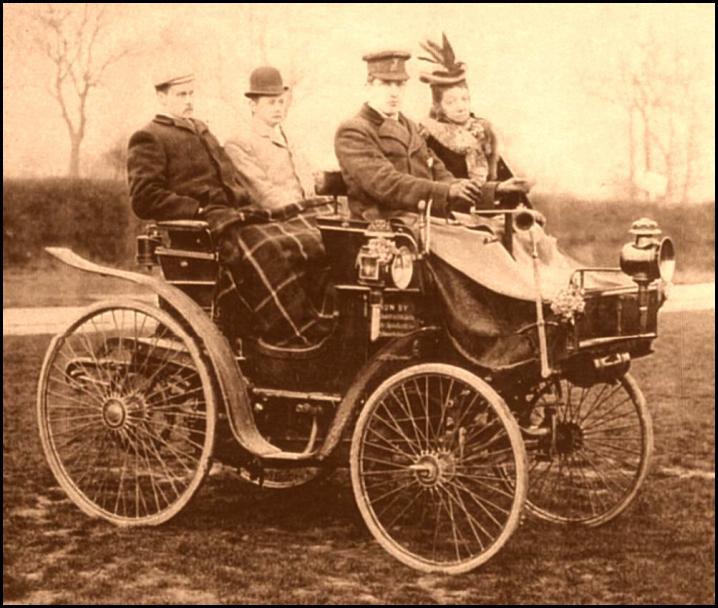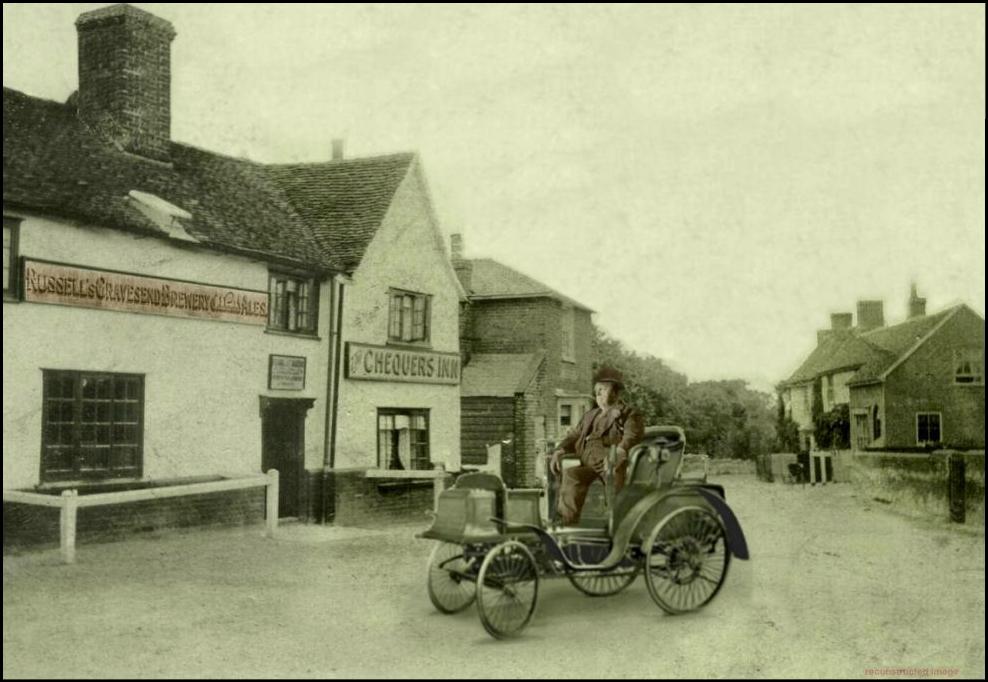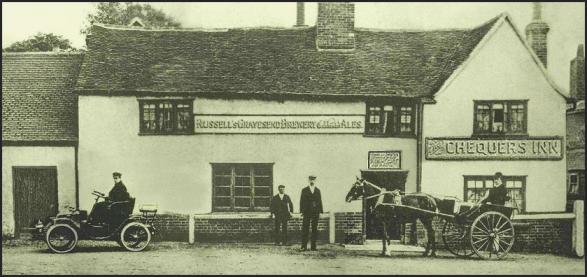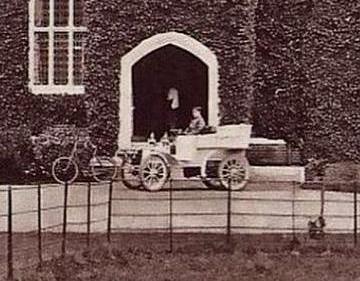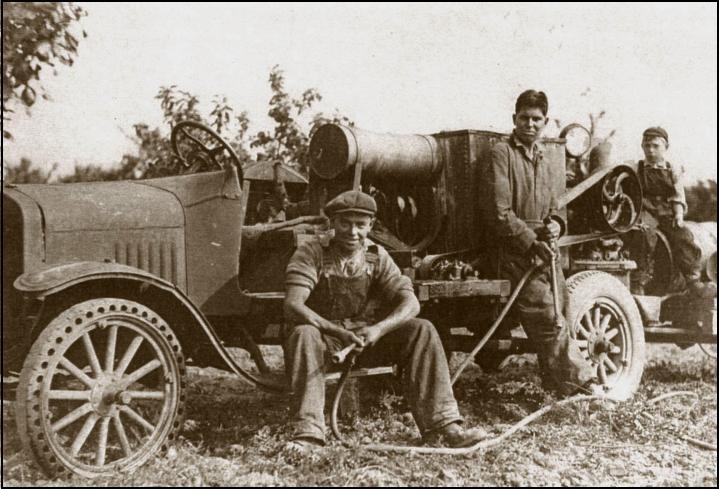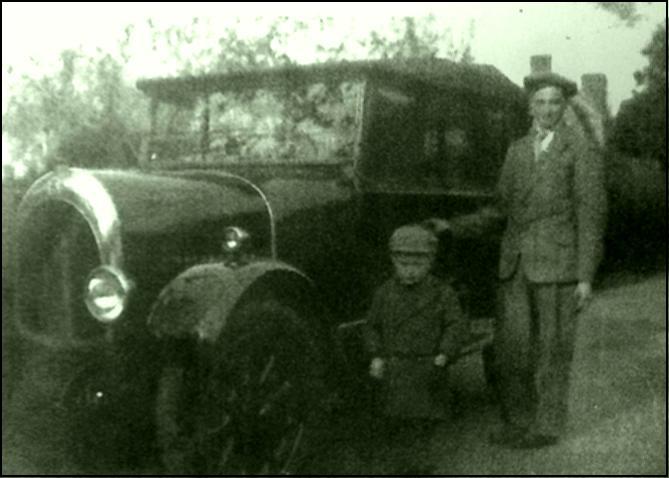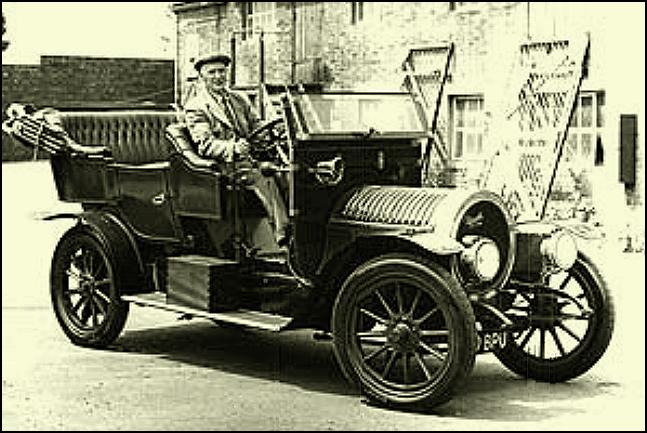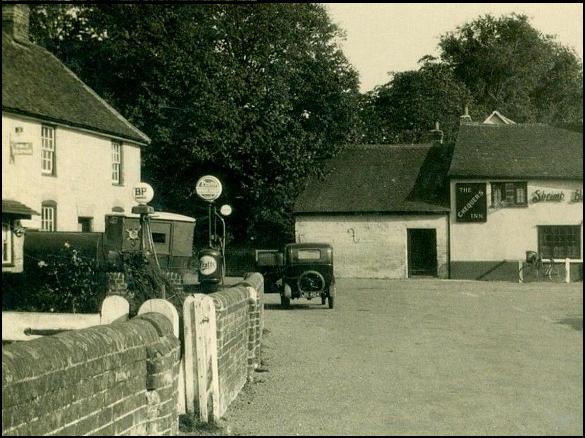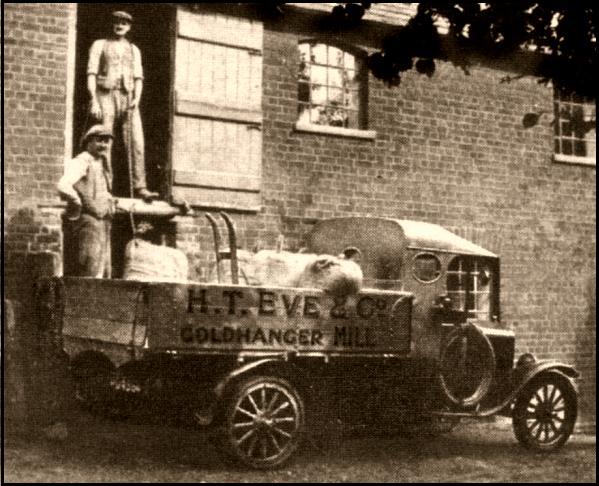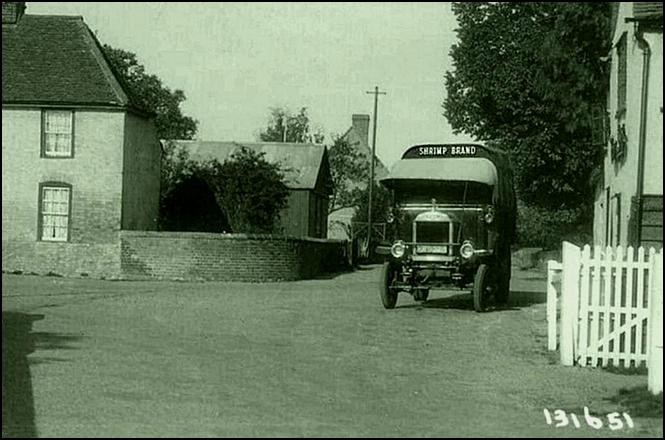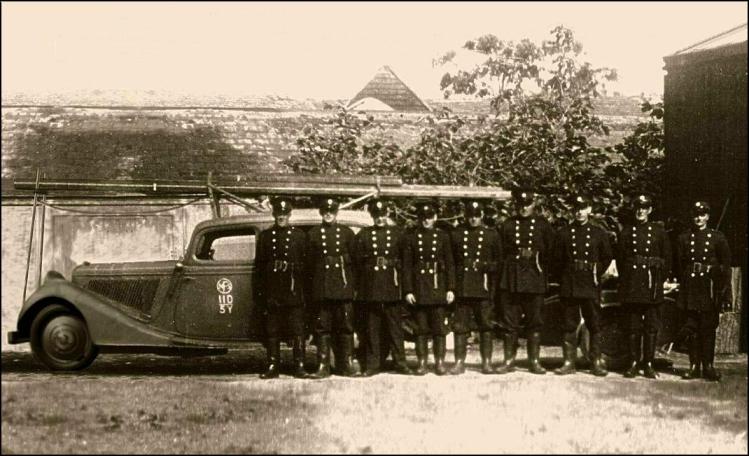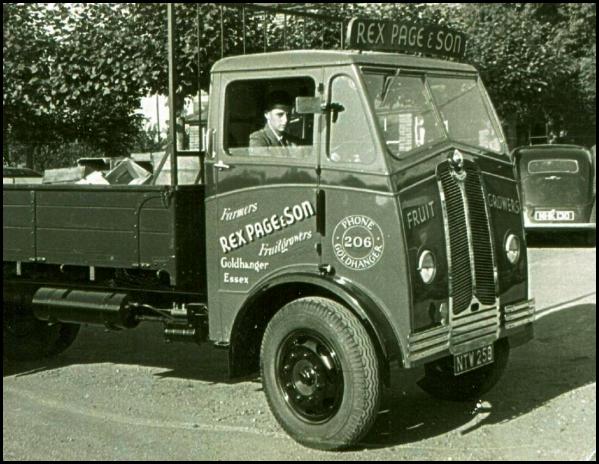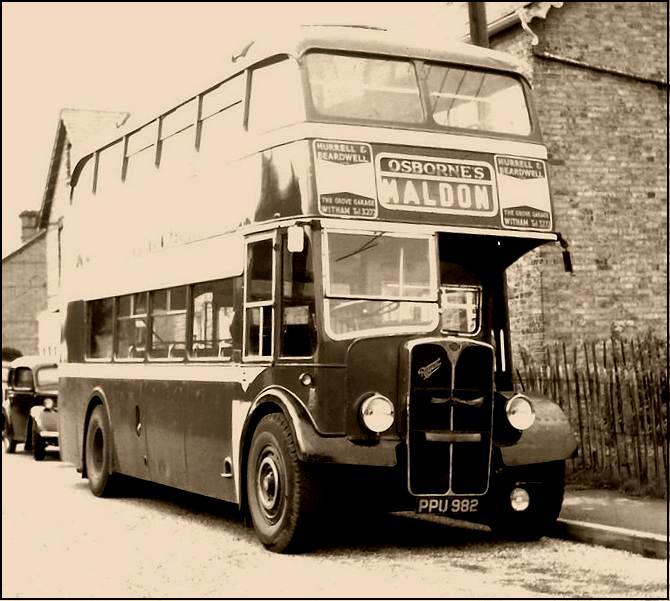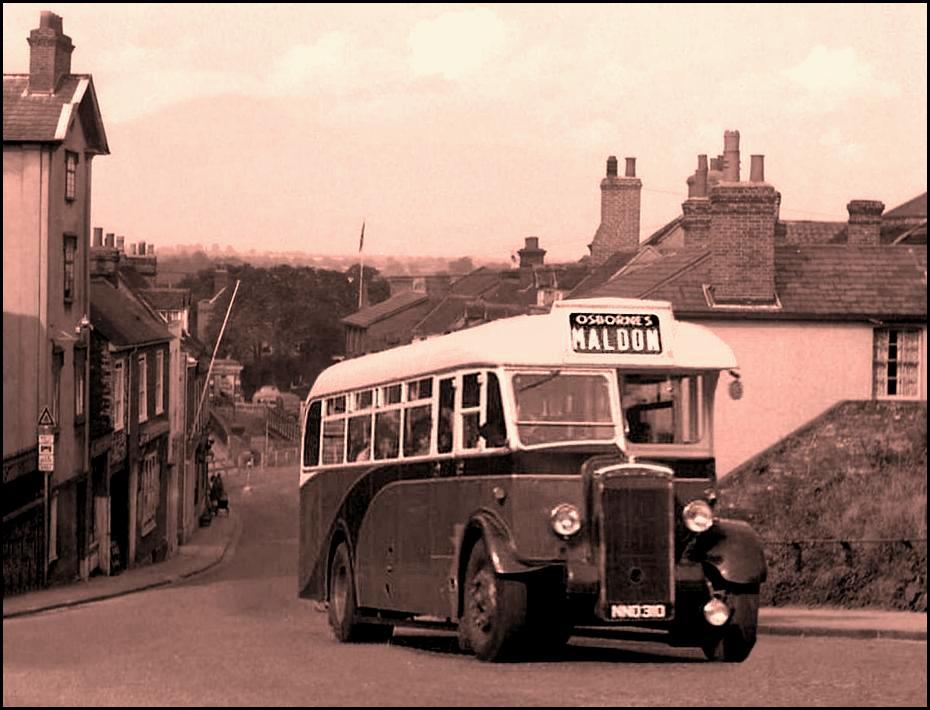|
|
||||||||||
|
Transport
in the past |
||||||||||
|
The
large collection of early postcards and photos of village scenes held in the
archives provide useful evidence and a “virtual museum” of the various forms of
transport at Goldhanger in the past. The relative isolation of the village
and poor state of the roads meant that transport always played an important
role in village life, and this is borne out by the provision of a
wheelwrights, a cycle shop and blacksmiths. In the early 1900s the parish
employed its own “roadmender”, and later had a petrol and service station. The
earliest photos available show horses, carts, pony and traps. Donkey carts
were also in evidence, which the better off residence used to transport and
entertain their children. Horse riding was preferred by the wealthier
landowners, whereas bicycles, and motorcycles, were a used by the workers.
Finally, the automobile came to the village. The full-size postcards from
where many of these images originate can be seen at... Selection of early postcards. select images below for an
enlargement recent
additions marked with * |
||||||||||
|
Contents.... |
o Railways |
|
||||||||
|
Early equine based
forms of transport |
||||||||||
|
Two
farm wagons being used to transport village
school children to Little Totham in the 1890s. Two
2-wheeled gigs, also called chaises, outside Mr. Mann’s
shop in The Square are shown on this early postcard |
||||||||||
|
|
||||||||||
|
Early
postcards show both two and four wheeled carriages being used to carry people
and goods. This is from a1906 postcard. The
boy in this 1920s postcard seems to be sitting on top of a goods delivery
cart outside The Chequers |
||||||||||
|
|
|
|
||||||||
|
A
horse rider outside Hall Farm in 1911. Two
heavy horses from Hall Farm being paraded in
Head St. in the late 1920s that were used for pulling wagons and ploughing |
||||||||||
|
|
|
|
||||||||
|
Stanley Wilkin’s impressive horse drawn caravan in the
early 1900s. A
stallion at Bounds Farm being held by John Wilkin in 1917 |
||||||||||
|
|
|
|
||||||||
|
Bounds Farm have transported strawberries to
Tiptree since 1926. In the early days they used these wagons. A
2-wheeled gig at Lauristons Farm in the 1940s |
||||||||||
|
|
|
|
||||||||
|
Stanley Wilkin at Bounds
Farm regularly rode his horse to the Factory at Tiptree in the 1920s
& 30s As
recently as the 1957 the blacksmiths
in Church St. was re-shoeing horses. |
||||||||||
|
|
|
|
||||||||
|
The
Revd Gardner at the Rectory
used a donkey cart as transport for his family in the late 1800s. Charles Page, farmer of Church
Farm also had a donkey cart for use by his children(1908 photo) The wealthier
families used donkey carts for Sunday afternoon trips to the Creek and along
the beach. |
||||||||||
|
This
farm wagon from the early 1900s has Bunting
Bros, Goldhanger, Essex in
the top right panel and was used to
transport cattle to market. William
& Emily Page, Follyfaults farmers in
the 1890s in their carriage |
||||||||||
|
Railways There were two
separate proposals for railway lines that would have supported Goldhanger.
The first in the 1882 and second in the 1890. The 1882 plan was for a line
adjacent to the seawall running through Goldhanger, Mill Beach, and Heybridge
to join up with the Maldon to Witham line at Langford. The 1890 plan was for
a line from Tollesbury to Tolleshunt D’arcy, Tolleshunt Major, Beckingham, Lt
and Gt Totham to join up with the Maldon to Witham line at Langford. Neither
ever happened. There
is more about the ... Plans that never happened -
railways and those actually
built... Local
railways in the past |
||||||||||
|
Tolleshunt D’arcy station When the “Crab
& Winkle” railway from Tollesbury to Kelveldon opened in 1904, Goldhanger
residents used pony and traps or horse and cart to travel to Tolleshunt
D’arcy station and catch the train to Kelveldon. From there they could travel
to Colchester, Chelmsford or London, with journey times previously
unimaginable. However, the line closed to passengers in 1951 and Maldon and
Langford became the nearest stations. That line was closed by the “Beeching
Axe” in 1964. *
Railway carriages however, have never been far from the village, as shown in
the... Virtual Museum - carriages |
||||||||||
|
Traction Engines Traction Engines became available
for general use in agriculture and for moving heavy loads in the latter half
of the 1800s. In the 1920s, steam tractors demonstrated
clear economic advantages over horse power for heavy haulage. However, after
WW-2 petrol and diesel engine lorries and tractors rapidly took over. From
the 1950s, a preservation movement started as enthusiasts realised traction
engines were in danger of disappearing, and of many of the remaining engines
were restored and they occasionally pass through the village. |
||||||||||
|
A
traction engine can be seen in this 1920s postcard photo taken from the
Church tower, looking down into the Old Rectory
farmyard on Church St. In
WW-II Sadds cut down large Elms on The Avenue and took them by traction
engine to their Maldon works. |
||||||||||
|
|
|
|||||||||
|
From the late
1800s to the 1940s traction
engines were extensively used on local farms for many of task previously
performed by horses. These photos were taken at Highams
Farm. |
||||||||||
|
|
||||||||||
|
More recently locally preserved traction engines have taken part in
village celebrations and processions. This photograph
was taken outside the Cricketers Inn. A
traction engine in the 2002 Jubilee parade with Chequers
landlord Phil Glover.. |
||||||||||
|
Cycles and Motorcycles |
||||||||||
|
This
early postcard shows a couple on bicycles in “The Avenue” near Rectory
cottage. This
1920s postcard shows a bicycle and a motorcycle and sidecar outside The Chequers |
||||||||||
|
|
|
|
||||||||
|
Farmer
Robert Page on a bicycle outside Follyfaunts
farmhouse at in the early 1900s. Boy
cycling past the cottages at 18 to 22 Fish Street in 1915 |
||||||||||
|
|
||||||||||
|
The
village Blacksmith, Harold
Enemy with his motorcycle in the 1940s. Teenagers
with their cycles outside No.2 in Square in the 1950s. |
||||||||||
|
|
|
|
||||||||
|
Early Automobiles |
||||||||||
|
Said
to be the first car to pass through Goldhanger in 1897. Ernest and Charles Page are in the rear. Frank
Wellington is driving. Dr Salter’s first automobile, a 4½
HP Benz, in 1902. He would have used this to visit his patients in Goldhanger
and the Chequers |
||||||||||
|
|
|
|
||||||||
|
Charles Page in his first car, a 1906 Oleans automobile,
photographed in the track at the Old Rectory
where he farmed. Frank Wellington is on the left of this postcard
scene of The Chequers, in his Oleans automobile.
with a pony and trap on the right 1905 |
||||||||||
|
|
|
|
||||||||
|
The Revd Gardner’s chauffeur in the Rector’s 10 HP
Speedwell automobile, which he owned from 1904 to 1909. The
Rector’s automobile outside the main entrance of The
Rectory. There is also a bicycle against the fence |
||||||||||
|
|
|
|
||||||||
|
Apple
Spraying at Old Rectory Farm in the 1930s,
using a re-biult Model-T Ford. Charles Page owned several of these and used them
in various roles. A
“Bean” automobile used as a taxi with owner Ernie Barbrook, on the right, and
3-year old Denis Chaplin on the left in
Church St. |
||||||||||
|
|
|
|
||||||||
|
Between
1906 and 1913 Bentalls Engineering of Heybridge
built 100 of these automobiles “for the local market”, and would have been
seen in the area. Flying
Officers, at the Goldhanger Flight Station
between 1917 & 1919, would have used this Crossley Tourer issued to RFC
officers to visit The Chequers |
||||||||||
|
|
|
|
||||||||
|
A
1930s postcard showing a 1920s Ford outside the village shop in The Square, with the early petrol
pumps. The
Page family of Thatch End, Fish St with their 1930s car and caravan. |
||||||||||
|
|
|
|
||||||||
|
Village filling &
service station |
||||||||||
|
The
two signs seen on this postcard of Mr. Mann’s shop in The Square read: In
1905 petrol pumps were installed with glass globes as seen here and on the
1930s postcard above |
||||||||||
|
|
|
|
||||||||
|
By
the 1940s the business had moved around the corner into Church St. and into a
building that had the appearance of a WW-1 hut. The
filling station closed in the 1990s and a pair of cottages was built on the
site. |
||||||||||
|
|
|
|
||||||||
|
Early commercial
transport |
||||||||||
|
H.T.Eve
& Co’s. Truck loading up at the mill
in Church St in 1920. A
very similar looking truck outside the village shop in The Square in 1921 |
||||||||||
|
|
|
|
||||||||
|
|
A
“Shrimp Brand” delivery lorry outside The Chequers in the 1930s A
Hasler & Co. Corn and Seed Merchants,
lorry outside Vaulty Manor in the 1940s |
|||||||||
|
|
|
|
||||||||
|
Maldon
provided the nearest fire service and attended several fires recored at
Goldhanger before 1900. This is the Maldon 1910 horse drawn tender. During
WW-2 Goldhanger had an Auxiliary Fire Service (AFC)
using a saloon car based at the Old Rectory... |
||||||||||
|
|
||||||||||
|
A
delivery lorry belonging to Rex Page & Son, fruit growers of the Old Rectory, Fish St. in the 1950s. Rex was Charles Page’s son. A
delivery lorry outside The Chequers in the 1970s |
||||||||||
|
|
Osborne’s buses |
|
||||||||
|
G W Osborne of Tollesbury provided a
public transport service through
Goldhanger for about 100 years. Mr. Osborne initially
used horse drawn vehicles for a Tollesbury based passenger and parcel
service. He then started a passenger service between Tollesbury and
Colchester in 1917 using a Model-T Ford. Around 1920 a school bus service was
introduced to Maldon. Later a regular bus service was introduced to Maldon
passing through Goldhanger Square. When Osborne’s
buses first started taking local school children to Maldon. This involved
going up Market Hill, however early Ford Model-Ts could not make it up the
hill when fully loaded, as early models had no fuel pump and with the petrol
tank at the rear the fuel didn't reach the engine on a steep hill when fully
loaded. Their solution was to ask the pupils to get out at the bottom of the
hill and walk up. The bus drove up empty and the children re-joined it at the
top. |
||||||||||
|
|
||||||||||
|
||||||||||
|
one of Osborne’s original horse drawn vehicles |
Mr Osborne’s Model-T Ford |
a charabanc in The Square |
|
|||||||
|
early Osborn double decker in Maldon |
Osborne’s single decker on Market Hill in the 1940s |
|||||||||
|
Osborne’s
Bus Company sold out to the Heddingham
Bus Company in 1997 |
||||||||||
|
Eastern National Buses |
||||||||||
|
Even
Eastern National once
ran as far as Goldhanger! |
||||||||||
|
|
|
|
||||||||

